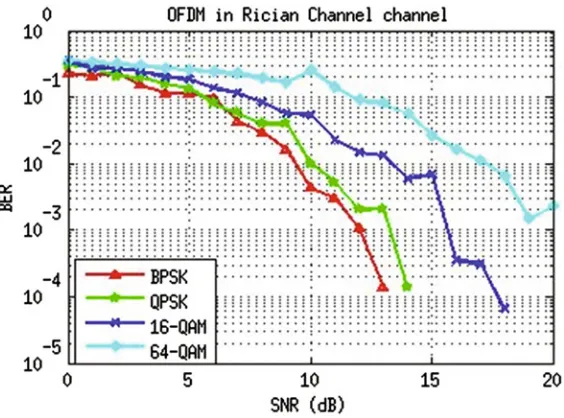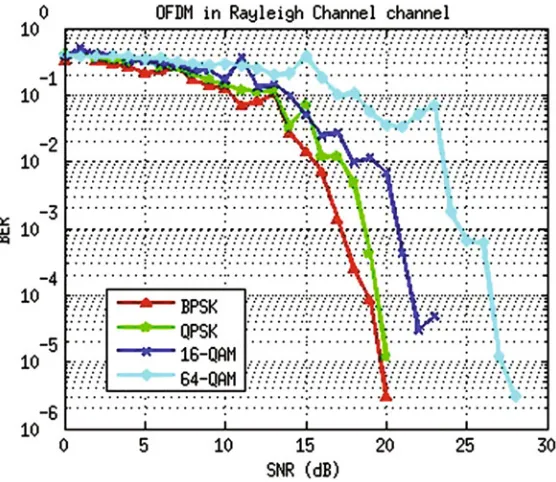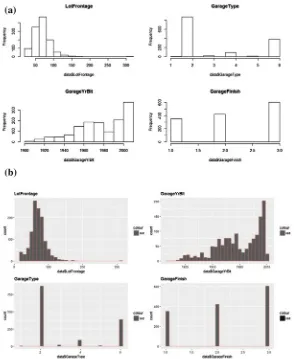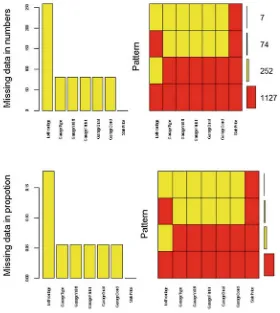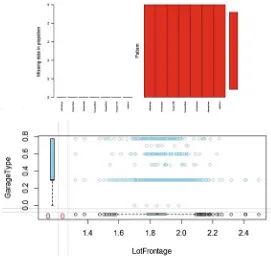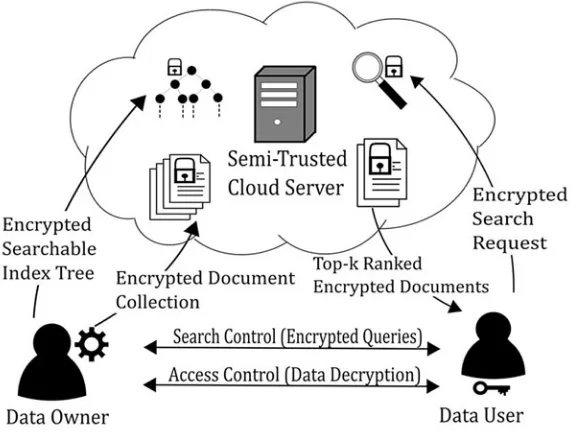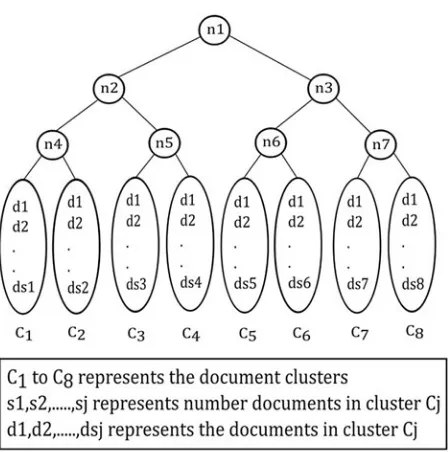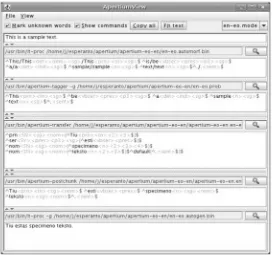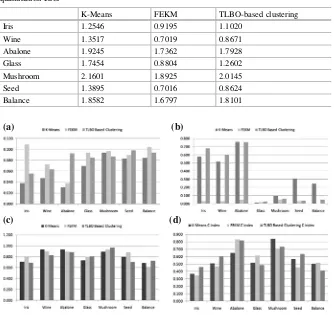Advances in Intelligent Systems and Computing
711
Himansu Sekhar Behera
Janmenjoy Nayak
Bighnaraj Naik
Ajith Abraham
Editors
Computational
Intelligence in
Data Mining
Advances in Intelligent Systems and Computing
Volume 711
Series editor
The series“Advances in Intelligent Systems and Computing”contains publications on theory, applications, and design methods of Intelligent Systems and Intelligent Computing. Virtually all disciplines such as engineering, natural sciences, computer and information science, ICT, economics, business, e-commerce, environment, healthcare, life science are covered. The list of topics spans all the areas of modern intelligent systems and computing such as: computational intelligence, soft computing including neural networks, fuzzy systems, evolutionary computing and the fusion of these paradigms, social intelligence, ambient intelligence, computational neuroscience, artificial life, virtual worlds and society, cognitive science and systems, Perception and Vision, DNA and immune based systems, self-organizing and adaptive systems, e-Learning and teaching, human-centered and human-centric computing, recommender systems, intelligent control, robotics and mechatronics including human-machine teaming, knowledge-based paradigms, learning paradigms, machine ethics, intelligent data analysis, knowledge management, intelligent agents, intelligent decision making and support, intelligent network security, trust management, interactive entertainment, Web intelligence and multimedia.
The publications within“Advances in Intelligent Systems and Computing”are primarily proceedings of important conferences, symposia and congresses. They cover significant recent developments in the field, both of a foundational and applicable character. An important characteristic feature of the series is the short publication time and world-wide distribution. This permits a rapid and broad dissemination of research results.
Advisory Board Chairman
Nikhil R. Pal, Indian Statistical Institute, Kolkata, India e-mail: nikhil@isical.ac.in
Members
Rafael Bello Perez, Universidad Central“Marta Abreu”de Las Villas, Santa Clara, Cuba e-mail: rbellop@uclv.edu.cu
Emilio S. Corchado, University of Salamanca, Salamanca, Spain e-mail: escorchado@usal.es
Hani Hagras, University of Essex, Colchester, UK e-mail: hani@essex.ac.uk
László T. Kóczy, Széchenyi István University, Győr, Hungary e-mail: koczy@sze.hu
Vladik Kreinovich, University of Texas at El Paso, El Paso, USA e-mail: vladik@utep.edu
Chin-Teng Lin, National Chiao Tung University, Hsinchu, Taiwan e-mail: ctlin@mail.nctu.edu.tw
Jie Lu, University of Technology, Sydney, Australia e-mail: Jie.Lu@uts.edu.au
Patricia Melin, Tijuana Institute of Technology, Tijuana, Mexico e-mail: epmelin@hafsamx.org
Nadia Nedjah, State University of Rio de Janeiro, Rio de Janeiro, Brazil e-mail: nadia@eng.uerj.br
Ngoc Thanh Nguyen, Wroclaw University of Technology, Wroclaw, Poland e-mail: Ngoc-Thanh.Nguyen@pwr.edu.pl
Jun Wang, The Chinese University of Hong Kong, Shatin, Hong Kong e-mail: jwang@mae.cuhk.edu.hk
Himansu Sekhar Behera
Janmenjoy Nayak
⋅
Bighnaraj Naik
Ajith Abraham
Editors
Computational Intelligence
in Data Mining
Proceedings of the International Conference
on CIDM 2017
Editors
Himansu Sekhar Behera
Department of Computer Science and Engineering & Information Technology Veer Surendra Sai University of Technology Sambalpur, Odisha
India
Janmenjoy Nayak
Department of Computer Science and Engineering
Sri Sivani College of Engineering (SSCE) Srikakulam, Andhra Pradesh
India
Bighnaraj Naik
Department of Computer Application Veer Surendra Sai University of Technology Sambalpur, Odisha
India
Ajith Abraham
Machine Intelligence Research (MIR) Lab Auburn, WA
ISSN 2194-5357 ISSN 2194-5365 (electronic) Advances in Intelligent Systems and Computing
ISBN 978-981-10-8054-8 ISBN 978-981-10-8055-5 (eBook) https://doi.org/10.1007/978-981-10-8055-5
Library of Congress Control Number: 2017964255 © Springer Nature Singapore Pte Ltd. 2019
This book was advertised with a copyright holder The Editor(s)/The Author(s) in error, whereas the publisher holds the copyright.
This work is subject to copyright. All rights are reserved by the Publisher, whether the whole or part of the material is concerned, specifically the rights of translation, reprinting, reuse of illustrations, recitation, broadcasting, reproduction on microfilms or in any other physical way, and transmission or information storage and retrieval, electronic adaptation, computer software, or by similar or dissimilar methodology now known or hereafter developed.
The use of general descriptive names, registered names, trademarks, service marks, etc. in this publication does not imply, even in the absence of a specific statement, that such names are exempt from the relevant protective laws and regulations and therefore free for general use.
The publisher, the authors and the editors are safe to assume that the advice and information in this book are believed to be true and accurate at the date of publication. Neither the publisher nor the authors or the editors give a warranty, express or implied, with respect to the material contained herein or for any errors or omissions that may have been made. The publisher remains neutral with regard to jurisdictional claims in published maps and institutional affiliations.
Printed on acid-free paper
Preface
In the next decade, the growth of data both structured and unstructured will present
challenges as well as opportunities for industries and academia. The present
sce-nario of storage of the amount of data is quite huge in the modern database due to
the availability and popularity of the Internet. Thus, the information needs to be
summarized and structured in order to maintain effective decision-making. With the
explosive growth of data volumes, it is essential that real-time information that is of
use to the business can be extracted to deliver better insights to decision-makers,
understand complex patterns, etc. When the quantity of data, dimensionality and
complexity of the relations in the database are beyond human capacities, there is a
requirement for intelligent data analysis techniques, which could discover useful
knowledge from data. While data mining evolves with innovative learning
algo-rithms and knowledge discovery techniques, computational intelligence harnesses
the results of data mining for becoming more intelligent than ever. In the present
scenario of computing, computational intelligence tools offer adaptive mechanisms
that enable the understanding of data in complex and changing environments.
The Fourth International Conference on
“Computational Intelligence in Data
Mining (ICCIDM 2017)”
is organized by Veer Surendra Sai University of
Tech-nology (VSSUT), Burla, Sambalpur, Odisha, India, during 11–12 November 2017.
ICCIDM is an international forum for representation of research and developments
in the
fields of data mining and computational intelligence. More than 250
prospective authors submitted their research papers to the conference. After a
thorough double-blind peer review process, editors have selected 78 papers. The
proceedings of ICCIDM is a mix of papers from some latest
findings and research
of the authors. It is being a great honour for us to edit the proceedings. We have
enjoyed considerably working in cooperation with the international advisory,
programme and technical committee to call for papers, review papers and
finalize
papers to be included in the proceedings.
This international conference on CIDM aims at encompassing new breed of
engineers, technologists making it a crest of global success. All the papers are
focused on the thematic presentation areas of the conference, and they have
pro-vided ample opportunity for presentation in different sessions. Research in data
mining has its own history. But, there is no doubt about the tips and further
advancements in the data mining areas will be the main focus of the conference.
This year
’
s programme includes exciting collections of contributions resulting from
a successful call for papers. Apart from those, two special sessions named
“
Com-putational Intelligence in Data Analytics”
and
“Applications of Computational
Intelligence in Power and Energy Systems”
have been proposed for more
discus-sions on the theme-related areas. The selected papers have been divided into
the-matic areas including both review and research papers and highlight the current
focus on computational intelligence techniques in data mining.
We hope the author’s own research and opinions add value to it. First and
foremost are the authors of papers, columns and editorials whose works have made
the conference a great success. We had a great time putting together this
pro-ceedings. The ICCIDM conference and proceedings are a credit to a large group of
people, and everyone should be congratulated for the outcome. We extend our deep
sense of gratitude to all those for their warm encouragement, inspiration and
continuous support for making it possible.
We hope all of us will appreciate the good contributions made and justify our
efforts.
Sambalpur, India
Himansu Sekhar Behera
Srikakulam, India
Janmenjoy Nayak
Sambalpur, India
Bighnaraj Naik
Auburn, USA/Ostrava, Czech Republic
Ajith Abraham
Conference Committee
Chief Patron and President
Prof. E. Saibaba Reddy, Vice Chancellor, VSSUT, B.Tech., M.E. (Hons.) (Roorkee),
Ph.D. (Nottingham, UK), Postdoc (Halifax, Canada), Postdoc (Birmingham, UK)
Honorary Advisory Chair
Prof. S. K. Pal, Sr., Member IEEE, LFIEEE, FIAPR, FIFSA, FNA, FASc, FNASc,
FNAE, Distinguished Scientist and Former Director, Indian Statistical Institute,
India
Prof. V. E. Balas, Sr., Member IEEE, Aurel Vlaicu University, Romania
Honorary General Chair
Prof. Rajib Mall, Indian Institute of Technology (IIT) Kharagpur, India
Prof. P. K. Hota, Dean, CDCE, VSSUT, India
General Chair
Prof. Ashish Ghosh, Indian Statistical Institute, Kolkata, India
Prof. B. K. Panigrahi, Indian Institute of Technology (IIT) Delhi, India
Programme Chair
Dr. H. S. Behera, Veer Surendra Sai University of Technology (VSSUT), Burla,
Odisha, India
Chairman, Organizing Committee
Prof. Amiya Ku. Rath, HOD, Department of CSE and IT, Veer Surendra Sai
University of Technology (VSSUT), Burla, Odisha, India
Vice-Chairman, Organizing Committee
Dr. S. K. Padhy, HOD, Department of Computer Application, Veer Surendra Sai
University of Technology (VSSUT), Burla, Odisha, India
Convenor
Dr. Bighnaraj Naik, Department of Computer Application, Veer Surendra Sai
University of Technology (VSSUT), Burla, Odisha, India
International Advisory Committee
Prof. A. Abraham, Machine Intelligence Research Labs, USA
Prof. Dungki Min, Konkuk University, Republic of Korea
Prof. Francesco Marcelloni, University of Pisa, Italy
Prof. Francisco Herrera, University of Granada, Spain
Prof. A. Adamatzky, Unconventional Computing Centre, UWE, UK
Prof. H. P. Proença, University of Beira Interior, Portugal
Prof. P. Mohapatra, University of California
Prof. S. Naik, University of Waterloo, Canada
Prof. George A. Tsihrintzis, University of Piraeus, Greece
Prof. Richard Le, La Trobe University, Australia
Prof. Khalid Saeed, AUST, Poland
Prof. Yew-Soon Ong, Singapore
Prof. Andrey V. Savchenko, NRU HSE, Russia
Prof. P. Mitra, P.S. University, USA
Prof. D. Sharma, University of Canberra, Australia
Prof. Istvan Erlich, University of Duisburg-Essen, Germany
Prof. Michele Nappi, University of Salerno, Italy
Prof. Somesh Jha, University of Wisconsin, USA
Prof. Sushil Jajodia, George Mason University, USA
Prof. S. Auephanwiriyakul, Chiang Mai University, Thailand
Prof. Carlos A. Coello Coello, Mexico
Prof. M. Crochemore, University de Marne-la-Vallée, France
Prof. T. Erlebach, University of Leicester, Leicester, UK
Prof. T. Baeck, Universiteit Leiden, Leiden, The Netherlands
Prof. J. Biamonte, ISI Foundation, Torino, Italy
Prof. C. S. Calude, University of Auckland, New Zealand
Prof. P. Degano, Università di Pisa, Pisa, Italy
Prof. Raouf Boutaba, University of Waterloo, Canada
Prof. Kenji Suzuki, University of Chicago
Prof. Raj Jain, WU, USA
Prof. D. Al-Jumeily, Liverpool J. Moores University, UK
Prof. M. S. Obaidat, Monmouth University, USA
Prof. P. N. Suganthan, NTU, Singapore
Prof. Biju Issac, Teesside University, UK
Prof. Brijesh Verma, CQU, Australia
Prof. Ouri E. Wolfson, University of Illinois, USA
Prof. Klaus David, University of Kassel, Germany
Prof. M. Dash, NTU, Singapore
Prof. L. Kari, Western University, London, Canada
Prof. A. S. M. Sajeev, Australia
Prof. Tony Clark, MSU, UK
Prof. Sanjib ku. Panda, NUS, Singapore
Prof. R. C. Hansdah, IISC Bangalore
Prof. G. Chakraborty, Iwate Prefectural University, Japan
Prof. Atul Prakash, University of Michigan, USA
Prof. Sara Foresti, University of degli Studi di Milano, Italy
Prof. Pascal Lorenz, University of Haute Alsace, France
Prof. G. Ausiello, University di Roma
“La Sapienza”, Italy
Prof. X. Deng, University of Liverpool, England, UK
Prof. Z. Esik, University of Szeged, Szeged, Hungary
Prof. A. G. Barto, University of Massachusetts, USA
Prof. G. Brassard, University de Montréal, Montréal, Canada
Prof. L. Cardelli, Microsoft Research, England, UK
Prof. A. E. Eiben, VU University, The Netherlands
Prof. Patrick Siarry, Université de Paris, Paris
Prof. R. Herrera Lara, EEQ, Ecuador
Prof. M. Murugappan, University of Malaysia
National Advisory Committee
Prof. P. K. Pradhan, Registrar, VSSUT, Burla
Prof. R. P. Panda, VSSUT, Burla
Prof. A. N. Nayak, Dean, SRIC, VSSUT, Burla
Prof. D. Mishra, Dean, Students’
Welfare, VSSUT, Burla
Prof. P. K. Kar, Dean, Faculty & Planning, VSSUT, Burla
Prof. P. K. Das, Dean, Academic Affairs, VSSUT, Burla
Prof. S. K. Swain, Dean, PGS&R, VSSUT, Burla
Prof. S. Panda, Coordinator TEQIP, VSSUT, Burla
Prof. D. K. Pratihar, IIT Kharagpur
Prof. K. Chandrasekaran, NIT Karnataka
Prof. S. G. Sanjeevi, NIT Warangal
Prof. G. Saniel, NIT Durgapur
Prof. B. B. Amberker, NIT Warangal
Prof. R. K. Agrawal, JNU, New Delhi
Prof. U. Maulik, Jadavpur University
Prof. Sonajharia Minz, JNU, New Delhi
Prof. K. K. Shukla, IIT, BHU
Prof. A. V. Reddy, JNTU, Hyderabad
Prof. A. Damodaram, Sri Venkateswara University
Prof. C. R. Tripathy, SU, Odisha
Prof. P. Sanyal, WBUT, Kolkata
Prof. G. Panda, IIT, BBSR
Prof. B. B. Choudhury, ISI Kolkata
Prof. G. C. Nandy, IIIT Allahabad
Prof. R. C. Hansdah, IISC Bangalore
Prof. S. K. Basu, BHU, India
Prof. J. V. R. Murthy, JNTU, Kakinada
Prof. D. V. L. N. Somayajulu, NIT Warangal
Prof. G. K. Nayak, IIIT, BBSR
Prof. P. P. Choudhury, ISI Kolkata
Prof. D. Vijaya Kumar, AITAM, Srikakulam
Prof. Sipra Das Bit, IIEST, Kolkata
Prof. S. Bhattacharjee, NIT Surat
Technical Committee Members
Dr. Adel M. Alimi, REGIM-Lab, ENIS, University of Sfax, Tunisia
Dr. Chaomin Luo, University of Detroit Mercy Detroit, Michigan, USA
Dr. Istvan Erlich, Department of EE & IT, University of Duisburg-Essen, Germany
Dr. Tzyh Jong Tarn, Washington University in St. Louis, USA
Dr. Simon X. Yang, University of Guelph, Canada
Dr. Raffaele Di Gregorio, University of Ferrara, Italy
Dr. Kun Ma, Shandong Provincial Key Laboratory of Network Based Intelligent
Computing, University of Jinan, China
Dr. Azah Kamilah Muda, Faculty of ICT, Universiti Teknikal Malaysia Melaka,
Malaysia
Dr. Biju Issac, Teesside University, Middlesbrough, England, UK
Dr. Bijan Shirinzadeh, Monash University, Australia
Dr. Enver Tatlicioglu, Izmir Institute of Technology, Turkey
Dr. Hajime Asama, The University of Tokyo, Japan
Dr. N. P. Padhy, Department of EE, IIT Roorkee, India
Dr. Ch. Satyanarayana, Department of Computer Science and Engineering, JNTU
Kakinada, India
Dr. B. Majhi, Department of Computer Science and Engineering, NIT Rourkela,
India
Dr. M. Murugappan, School of Mechatronic Engineering, University Malaysia
Perlis, Perlis, Malaysia
Dr. Kashif Munir, King Fahd University of Petroleum and Minerals, Hafr Al-Batin
Campus, Kingdom of Saudi Arabia
Dr. L. Sumalatha, Department of Computer Science and Engineering, JNTU
Kakinada, India
Dr. K. N. Rao, Department of Computer Science and Engineering, Andhra
University, Visakhapatnam, India
Dr. S. Das, Indian Statistical Institute, Kolkata, India
Dr. D. P. Mohaptra, National Institute of Technology (NIT) Rourkela, India
Dr. A. K. Turuk, Head, Department of CSE, NIT RKL, India
Dr. M. P. Singh, Department of CSE, NIT Patna, India
Dr. R. Behera, Department of EE, IIT Patna, India
Dr. P. Kumar, Department of CSE, NIT Patna, India
Dr. A. Das, Department of CSE, IIEST, WB, India
Dr. J. P. Singh, Department of CSE, NIT Patna, India
Dr. M. Patra, Berhampur University, Odisha, India
Dr. A. Deepak, Department of CSE, NIT Patna, India
Dr. D. Dash, Department of CSE, NIT Patna, India
Finance Committee
Prof. Amiya Ku. Rath, Department of CSE & IT, Veer Surendra Sai University of
Technology (VSSUT), Burla, Odisha, India
Prof. U. R. Jena, COF, Veer Surendra Sai University of Technology (VSSUT),
Burla, Odisha, India
Dr. H. S. Behera, Department of CSE & IT, Veer Surendra Sai University of
Technology (VSSUT), Burla, Odisha, India
Dr. S. K. Padhy, Department of Computer Application, Veer Surendra Sai
University of Technology (VSSUT), Burla, Odisha, India
Dr. Bighnaraj Naik, Department of Computer Application, Veer Surendra Sai
University of Technology (VSSUT), Burla, Odisha, India
Publication Chair
Dr. Janmenjoy Nayak, Sri Sivani College of Engineering, Srikakulam, Andhra
Pradesh, India
Special Session Chairs
Special Session on
“
Computational Intelligence in Data Analysis
”
:
Dr. Asit Kumar Das, Indian Institute of Engineering Science and Technology
(IIEST), IIIT Shibpur, WB, India
Dr. Imon Mukherjee, International Institute of Information Technology (IIIT)
Kalyani, WB, India
Special Session on
“
Computational Intelligence in Power & Energy Systems
”
Prof. (Dr.) P. K. Hota, Veer Surendra Sai University of Technology (VSSUT),
Odisha, India
Dr. Sasmita Behera, Veer Surendra Sai University of Technology (VSSUT),
Odisha, India
Publicity Chair
Prof. P. C. Swain, VSSUT, Burla
Dr. Santosh Kumar Majhi, VSSUT, Burla
Mrs. E. Oram, VSSUT, Burla
Registration Chair
Dr. Sucheta Panda, VSSUT, Burla
Mrs. Sasmita Acharya, VSSUT, Burla
Mrs. Sasmita Behera, VSSUT, Burla
Ms. Gargi Bhattacharjee, VSSUT, Burla
Mrs. Santi Behera, VSSUT, Burla
Sponsorship Chair
Dr. Satyabrata Das, VSSUT, Burla
Mr. Sanjaya Kumar Panda, VSSUT, Burla
Mr. Sujaya Kumar Sathua, VSSUT, Burla
Mr. Gyanaranjan Shial, VSSUT, Burla
Web Chair
Mr. D. C. Rao, VSSUT, Burla
Mr. Kishore Kumar Sahu, VSSUT, Burla
Mr. Suresh Kumar Srichandan, VSSUT, Burla
Organizing Committee Members
Dr. Manas Ranjan Kabat, VSSUT, Burla
Dr. Rakesh Mohanty, VSSUT, Burla
Dr. Suvasini Panigrahi, VSSUT, Burla
Dr. Manas Ranjan Senapati, VSSUT, Burla
Dr. P. K. Sahu, VSSUT, Burla
Mr. Satya Prakash Sahoo, VSSUT, Burla
Mr. Sanjib Nayak, VSSUT, Burla
Ms. Sumitra Kisan, VSSUT, Burla
Mr. Pradipta Kumar Das, VSSUT, Burla
Mr. Atul Vikas Lakra, VSSUT, Burla
Ms. Alina Mishra, VSSUT, Burla
Ms. Alina Dash, VSSUT, Burla
Dr. M. K. Patel, VSSUT, Burla
Mr. D. P. Kanungo, VSSUT, Burla
Mr. D. Mishra, VSSUT, Burla
Mr. S. Mohapatra, VSSUT, Burla
International Reviewer Committee
Arun Agarwal, Siksha
‘O’
Anusandhan University, Odisha, India
M. Marimuthu, Coimbatore Institute of Technology, Coimbatore, India
Sripada Rama Sree, Aditya Engineering College (AEC), Surampalem, Andhra
Pradesh, India
Harihar Kalia, Seemanta Engineering College, Odisha, India
A. S. Aneeshkumar, Alpha Arts and Science College, Chennai, Tamil Nadu, India
Kauser Ahmed P., VIT University, Vellore, Tamil Nadu, India
Ajanta Das, Birla Institute of Technology, Mesra, India
Manuj Darbari, BBD University, Lucknow, India
Manoj Kumar Patel, Veer Surendra Sai University of Technology, Odisha, India
Nagaraj V. Dharwadkar, Rajarambapu Institute of Technology, Maharashtra, India
Chandan Jyoti Kumar, Department of Computer Science and Information
Tech-nology, Cotton College State University, Assam, India
Biswapratap Singh Sahoo, Department of Electrical Engineering, National Taiwan
University, Taipei, Taiwan.
S. P. Tripathy, NIT Durgapur, West Bengal, India
Suma V., Dean, Dayananda Sagar College of Engineering, Odisha, India
R. Patel, BVM Engineering College, Gujarat, India.
P. Sivakumar, SKP Engineering College, Tamil Nadu, India
Partha Garai, Kalyani Government Engineering College, Kalyani, West Bengal,
India
Anuranjan Misra, Noida International University, India
K. G. Srinivasagan, National Engineering College, Tamil Nadu, India
Jyotismita Chaki, Jadavpur University, West Bengal, India
Sawon Pratiher, IIT Kharagpur, India
R. V. S. Lalitha, Aditya College of Engineering and Technology, Surampalem,
India
G. Rosline Nesa Kumari, Saveetha University, Chennai, Tamil Nadu, India
Narayan Joshi, Parul University, Vadodara, India
S. Vaithyasubramanian, Sathyabama University, Chennai, Tamil Nadu, India
Abhishek Kumar, Lovely Professional University, Punjab, India
Prateek Agrawal, Lovely Professional University, Punjab, India
Sumanta Panda, Veer Surendra Sai University of Technology, Odisha, India
Jayakishan Meher, Centurion University of Technology and Management, Odisha,
India
Balakrushna Tripathy, VIT University, Tamil Nadu, India
Rajan Patel, Sankalchand Patel College of Engineering, NG, India
Narender Singh, Chhaju Ram Memorial Jat College, Haryana, India
P. M. K. Prasad, GMR Institute of Technology, Andhra Pradesh, India
Chhabi Rani Panigrahi, Central University Rajasthan, Gujarat, India
Srinivas Sethi, Indira Gandhi Institute of Technology, Odisha, India
Mahmood Ali Mirza, DMS SVH College of Engineering, Andhra Pradesh, India
P. Kumar, Zeal College of Engineering and Research, Pune, India
B. K. Sarkar, BIT Mesra, Ranchi, India
Trilochan Panigrahi, National Institute of Technology, Goa, India
Deepak D. Kshirsagar, College of Engineering Pune (COEP), Pune, India
Rahul Paul, University of South Florida, USA
Maya V. Karki, Professor, MSRIT, Bangalore, India
A. Anny Leema, B. S. Abdur Rahman University, Chennai, India
S. Logeswari, Bannari Amman Institute of Technology, Sathyamangalam, Tamil
Nadu, India
R. Gomathi, Bannari Amman Institute of Technology, Sathyamangalam, Tamil
Nadu, India
R. Kavitha, Sastra University, Thanjavur, Tamil Nadu, India
S. Das, Veer Surendra Sai University of Technology, Odisha, India
S. K. Majhi, Veer Surendra Sai University of Technology, Odisha, India
Sucheta Panda, Veer Surendra Sai University of Technology, Odisha, India
P. K. Hota, Veer Surendra Sai University of Technology, Odisha, India
G. T. Chandrasekhar, Sri Sivani College of Engineering, Srikakulam, Andhra
Pradesh, India
Janmenjoy Nayak, Sri Sivani College of Engineering, Srikakulam, Andhra Pradesh,
India
Bighnaraj Naik, Veer Surendra Sai University of Technology, Odisha, India
Acknowledgements
The theme and relevance of ICCIDM attracted more than 250 researchers/
academicians around the globe which enabled us to select good quality papers and
serve to demonstrate the popularity of the ICCIDM conference for sharing ideas
and research
findings with truly national and international communities. Thanks to
all those who have contributed in producing such a comprehensive conference
proceedings of ICCIDM.
The organizing committee believes and trusts that we have been true to the spirit
of collegiality that members of ICCIDM value even as also maintaining an elevated
standard as we have reviewed papers, provided feedback and presented a strong
body of published work in this collection of proceedings. Thanks to all the members
of the organizing committee for their heartfelt support and cooperation.
After the three successful versions of ICCIDM, it has indeed been an honour for
us to edit the proceedings of this fourth series of ICCIDM. We have been fortunate
enough to work in cooperation with a brilliant international as well as national
advisory board, reviewers, and programme and technical committee consisting of
eminent academicians to call for papers, review papers and
finalize papers to be
included in the proceedings.
We would like to express our heartfelt gratitude and obligations to the benign
reviewers for sparing their valuable time, putting an effort to review the papers in a
stipulated time and providing their valuable suggestions and appreciation in
improvising the presentation, quality and content of this proceedings. The eminence
of these papers is an accolade not only to the authors but also to the reviewers who
have guided towards perfection.
Last but not least, the editorial members of Springer Publishing deserve a special
mention and our sincere thanks to them not only for making our dream come true in
the shape of this proceedings, but also for its hassle-free and in-time publication in
the reputed Advances in Intelligent Systems and Computing, Springer.
The ICCIDM conference and proceedings are a credit to a large group of people,
and everyone should be proud of the outcome.
Contents
BER Performance Analysis of Image Transmission Using OFDM
Technique in Different Channel Conditions Using Various
Modulation Techniques
. . .1
Arun Agarwal, Binayak Satish Kumar and Kabita Agarwal
On Understanding the Release Patterns of Open Source
Java Projects
. . .9
Arvinder Kaur and Vidhi Vig
A Study of High-Dimensional Data Imputation Using Additive
LASSO Regression Model
. . .19
K. Lavanya, L. S. S. Reddy and B. Eswara Reddy
An Ef
fi
cient Multi-keyword Text Search Over Outsourced
Encrypted Cloud Data with Ranked Results
. . .31
Prabhat Keshari Samantaray, Navjeet Kaur Randhawa
and Swarna Lata Pati
Robust Estimation of IIR System
’
s Parameter Using Adaptive
Particle Swarm Optimization Algorithm
. . .41
Meera Dash, Trilochan Panigrahi and Renu Sharma
A Shallow Parser-based Hindi to Odia Machine
Translation System
. . .51
Jyotirmayee Rautaray, Asutosh Hota and Sai Sankar Gochhayat
Coherent Method for Determining the Initial Cluster Center. . . .
63
Bikram Keshari Mishra and Amiya Kumar Rath
Digital Image Watermarking Using (2, 2) Visual Cryptography
with DWT-SVD Based Watermarking
. . .77
Kamal Nayan Kaur, Divya, Ishu Gupta and Ashutosh Kumar Singh
Modeling of Nexa-1.2kW Proton Exchange Membrane Fuel Cell
Power Supply Using Swarm Intelligence
. . .87
Tata Venkat Dixit, Anamika Yadav and Shubhrata Gupta
Survey of Different Load Balancing Approach-Based Algorithms
in Cloud Computing: A Comprehensive Review
. . .99
Arunima Hota, Subasish Mohapatra and Subhadarshini Mohanty
Analysis of Credit Card Fraud Detection Using Fusion Classi
fi
ers. . . . .
111
Priyanka Kumari and Smita Prava Mishra
An Ef
fi
cient Swarm-Based Multicast Routing Technique
—
Review
. . .123
Priyanka Kumari and Sudip Kumar Sahana
A New Howard
–
Crandall
–
Douglas Algorithm for the American
Option Problem in Computational Finance
. . .135
Nawdha Thakoor, Dhiren Kumar Behera, Désiré Yannick Tangman
and Muddun Bhuruth
Graph Anonymization Using Hierarchical Clustering
. . .145
Debasis Mohapatra and Manas Ranjan Patra
Reevaluation of Ball-Race Conformity Effect on Rolling Element
Bearing Life Using PSO
. . .155
S. N. Panda, S. Panda, D. S. Khamari, P. Mishra and A. K. Pattanaik
Static Cost-Effective Analysis of a Shifted Completely Connected
Network
. . .165
Mohammed N. M. Ali, M. M. Ha
fi
zur Rahman, Dhiren K. Behera
and Yasushi Inoguchi
Dynamic Noti
fi
cations in Smart Cities for Disaster Management
. . .177
Sampada Chaudhari, Amol Bhagat, Nitesh Tarbani and Mahendra Pund
Application of Classi
fi
cation Techniques for Prediction
and Analysis of Crime in India
. . .191
Priyanka Das and Asit Kumar Das
Improving Accuracy of Classi
fi
cation Based on C4.5 Decision Tree
Algorithm Using Big Data Analytics
. . .203
Bhavna Rawal and Ruchi Agarwal
Comparative Study of MPPT Control of Grid-Tied PV Generation
by Intelligent Techniques
. . .213
S. Behera, D. Meher and S. Poddar
Stability Analysis in RECS-Integrated Multi-area AGC System
with SOS Algorithm Based Fuzzy Controller
. . .225
Prakash Chandra Sahu, Ramesh Chandra Prusty and Sidhartha Panda
Log-Based Reward Field Function for Deep-Q-Learning for Online
Mobile Robot Navigation
. . .237
Arun Kumar Sah, Prases K. Mohanty, Vikas Kumar
and Animesh Chhotray
Integrated Design for Assembly Approach Using Ant Colony
Optimization Algorithm for Optimal Assembly Sequence Planning
. . . .249
G. Bala Murali, B. B. V. L. Deepak, B. B. Biswal
and Bijaya Kumar Khamari
Design and Performance Evaluation of Fractional Order
PID Controller for Heat Flow System Using Particle Swarm
Optimization. . . .
261
Rosy Pradhan, Susmita Pradhan and Bibhuti Bhusan Pati
Land Records Data Mining: A Developmental Tool
for Government of Odisha
. . .273
Pabitrananda Patnaik, Subhashree Pattnaik and Prashant Kumar Pramanik
Piecewise Modeling of ECG Signals Using Chebyshev Polynomials
. . . .287
Om Prakash Yadav and Shashwati Ray
Analysis of Supplementary Excitation Controller for Hydel Power
System GT Dynamic Using Metaheuristic Techniques
. . .297
Mahesh Singh, R. N. Patel and D. D. Neema
Farthest SMOTE: A Modi
fi
ed SMOTE Approach
. . .309
Anjana Gosain and Saanchi Sardana
DKFCM: Kernelized Approach to Density-Oriented Clustering
. . .321
Anjana Gosain and Tusharika Singh
Comparative Study of Optimal Overcurrent Relay Coordination
Using Metaheuristic Techniques
. . .333
Shimpy Ralhan, Richa Goswami and Shashwati Ray
Prediction of Gold Price Movement Using Discretization
Procedure
. . .345
Debanjan Banerjee, Arijit Ghosal and Imon Mukherjee
Language Discrimination from Speech Signal Using Perceptual
and Physical Features. . . .
357
Ghazaala Yasmin, Ishani DasGupta and Asit K. Das
Constructing Fuzzy Type-I Decision Tree Using Fuzzy Type-II
Ambiguity Measure from Fuzzy Type-II Datasets
. . .369
Mohamed A. Elashiri, Ahmed T. Shawky and Abdulah S. Almahayreh
Aspect-Level Sentiment Analysis on Hotel Reviews
. . .379
Nibedita Panigrahi and T. Asha
Node Grouping and Link Segregation in Circular Layout
with Edge Bundling
. . .391
Surbhi Dongaonkar and Vahida Attar
Fuzzy-Based Mobile Base Station Clustering Technique to Improve
the Wireless Sensor Network Lifetime
. . .401
R. Sunitha and J. Chandrika
Hydropower Generation Optimization and Forecasting Using PSO
. . . .411
D. Kiruthiga and T. Amudha
Automatic Identi
fi
cation and Classi
fi
cation of Microaneurysms,
Exudates and Blood Vessel for Early Diabetic Retinopathy
Recognition
. . .423
Vaibhav V. Kamble and Rajendra D. Kokate
Performance Analysis of Tree-Based Approaches
for Pattern Mining
. . .435
Anindita Borah and Bhabesh Nath
Discovery of Variables Affecting Performance of Athlete Students
Using Data Mining
. . .449
Rahul Sarode, Aniket Muley, Parag Bhalchandra, Sinku Kumar Singh
and Mahesh Joshi
Implementation of Non-restoring Reversible Divider Using
a Quantum-Dot Cellular Automata
. . .459
Ritesh Singh, Neeraj Kumar Misra and Bandan Bhoi
Depth Estimation of Non-rigid Shapes Based on Fibonacci
Population Degeneration Particle Swarm Optimization
. . .471
Kothapelli Punnam Chandar and Tirumala Satya Savithri
Connecting the Gap Between Formal and Informal Attributes
Within Formal Learning with Data Mining Techniques
. . .483
Shivanshi Goel, A. Sai Sabitha and Abhay Bansal
Multiple Linear Regression-Based Prediction Model to Detect
Hexavalent Chromium in Drinking Water
. . .493
K. Sri Dhivya Krishnan and P. T. V. Bhuvaneswari
Data Engineered Content Extraction Studies
for Indian Web Pages
. . .505
Bhanu Prakash Kolla and Arun Raja Raman
Steganography Using FCS Points Clustering
and Kekre
’
s Transform
. . .513
Terence Johnson, Susmita Golatkar, Imtiaz Khan, Vaishakhi Pilankar
and Nehash Bhobe
Anomaly Detection in Phonocardiogram Employing
Deep Learning
. . .525
V. G. Sujadevi, K. P. Soman, R. Vinayakumar and A. U. Prem Sankar
Secured Image Transmission Through Region-Based Steganography
Using Chaotic Encryption
. . .535
Shreela Dash, M. N. Das and Mamatarani Das
Technical Analysis of CNN-Based Face Recognition
System
—
A Study
. . .545
S. Sharma, Ananya Kalyanam and Sameera Shaik
Application of Search Group Algorithm for Automatic Generation
Control of Interconnected Power System
. . .557
Dillip Khamari, Rabindra Kumar Sahu and Sidhartha Panda
A Heuristic Comparison of Optimization Algorithms for the
Trajectory Planning of a 4-axis SCARA Robot Manipulator
. . .569
Pradip Kumar Sahu, Gunji Balamurali, Golak Bihari Mahanta
and Bibhuti Bhusan Biswal
A Computer-Aided Diagnosis System for Breast Cancer Using
Deep Convolutional Neural Networks
. . .583
Nacer Eddine Benzebouchi, Nabiha Azizi and Khaled Ayadi
Indian Stock Market Prediction Using Machine Learning
and Sentiment Analysis
. . .595
Ashish Pathak and Nisha P. Shetty
Exploring the Average Information Parameters over Lung Cancer
for Analysis and Diagnosis
. . .605
Vaishnaw G. Kale and Vandana B. Malode
A Hash-Based Approach for Document Retrieval by Utilizing
Term Features
. . .617
Rajeev Kumar Gupta, Durga Patel and Ankit Bramhe
Transform Domain Mammogram Classi
fi
cation Using Optimum
Multiresolution Wavelet Decomposition and Optimized
Association Rule Mining
. . .629
Poonam Sonar and Udhav Bhosle
Noise Reduction in Electrocardiogram Signal Using Hybrid
Methods of Empirical Mode Decomposition with Wavelet
Transform and Non-local Means Algorithm
. . .639
Sarmila Garnaik, Nikhilesh Chandra Rout and Kabiraj Sethi
A Path-Oriented Test Data Generation Approach Hybridizing
Genetic Algorithm and Arti
fi
cial Immune System
. . .649
Gargi Bhattacharjee and Ashish Singh Saluja
To Enhance Web Response Time Using Agglomerative Clustering
Technique for Web Navigation Recommendation. . . .
659
Shraddha Tiwari, Rajeev Kumar Gupta and Ramgopal Kashyap
Query-Optimized PageRank: A Novel Approach
. . .673
Rajendra Kumar Roul, Jajati Keshari Sahoo and Kushagr Arora
Effects of Social Media on Social, Mental, and Physical Health
Traits of Youngsters
. . .685
Gautami Tripathi and Mohd Abdul Ahad
Document Labeling Using Source-LDA Combined
with Correlation Matrix
. . .697
Rajendra Kumar Roul and Jajati Keshari Sahoo
Diffusion Least Mean Square Algorithm for Identi
fi
cation of IIR
System Present in Each Node of a Wireless Sensor Networks
. . .709
Km Dimple, Dinesh Kumar Kotary and Satyasai Jagannath Nanda
Comparative Evaluation of Various Feature Weighting Methods
on Movie Reviews
. . .721
S. Sivakumar and R. Rajalakshmi
Dynamic ELD with Valve-Point Effects Using Biogeography-Based
Optimization Algorithm
. . .731
A. K. Barisal, Soudamini Behera and D. K. Lal
A Survey on Teaching
–
Learning-Based Optimization Algorithm:
Short Journey from 2011 to 2017
. . .739
Janmenjoy Nayak, Bighnaraj Naik, G. T. Chandrasekhar and H. S. Behera
Predicting Users
’
Preferences for Movie Recommender System
Using Restricted Boltzmann Machine
. . .759
Dayal Kumar Behera, Madhabananda Das and Subhra Swetanisha
Comparative Analysis of DTC Induction Motor Drives with Fire
fl
y,
Harmony Search, and Ant Colony Algorithms
. . .771
Naveen Goel, R. N. Patel and Saji Chacko
DNA Gene Expression Analysis on Diffuse Large B-Cell
Lymphoma (DLBCL) Based on Filter Selection Method
with Supervised Classi
fi
cation Method
. . .783
Alok Kumar Shukla, Pradeep Singh and Manu Vardhan
Categorizing Text Data Using Deep Learning: A Novel Approach
. . .793
Rajendra Kumar Roul and Sanjay Kumar Sahay
An Approach to Detect Patterns (Sub-graphs) with Edge Weight
in Graph Using Graph Mining Techniques
. . .807
Bapuji Rao and Sarojananda Mishra
Comparative Performance Analysis of Adaptive Tuned PID
Controller for Multi-machine Power System Network
. . .819
Mahesh Singh, Aparajita Agrawal, Shimpy Ralhan and Rajkumar Jhapte
A Competent Algorithm for Enhancing Low-Quality Finger Vein
Images Using Fuzzy Theory
. . .831
Rose Bindu Joseph and Devarasan Ezhilmaran
An Adaptive Fuzzy Filter-Based Hybrid ARIMA-HONN Model
for Time Series Forecasting
. . .841
Sibarama Panigrahi and H. S. Behera
An Evolutionary Algorithm-Based Text Categorization Technique
. . . .851
Ajit Kumar Das, Asit Kumar Das and Apurba Sarkar
Short-Term Load Forecasting Using Genetic Algorithm
. . .863
Papia Ray, Saroj Kumar Panda and Debani Prasad Mishra
A Dynamic Bottle Inspection Structure
. . .873
Santosh Kumar Sahoo, M. Mahesh Sharma and B. B. Choudhury
Feature Selection-Based Clustering on Micro-blogging Data
. . .885
Soumi Dutta, Sujata Ghatak, Asit Kumar Das, Manan Gupta
and Sayantika Dasgupta
Author Index
. . .897
About the Editors
Prof. Himansu Sekhar Behera
is working as Head of the Department and
Associate Professor in the Department of Information Technology, Veer Surendra
Sai University of Technology (VSSUT) (a unitary technical university, established
by Government of Odisha), Burla, Odisha. He has received his M.Tech. degree in
Computer Science and Engineering from NIT Rourkela (formerly REC, Rourkela)
and Doctor of Philosophy in Engineering (Ph.D.) from Biju Patnaik University of
Technology (BPUT), Rourkela, Government of Odisha, respectively. He has
published more than 80 research papers in various international journals and
con-ferences and edited 11 books and is acting as a member of the editorial/reviewer
board of various international journals. He is proficient in the
field of computer
science engineering, served the capacity of programme chair and tutorial chair and
acts as advisory member of committees of many national and international
con-ferences. His research interests include data mining and intelligent computing. He is
associated with various educational and research societies like OITS, ISTE, IE,
ISTD, CSI, OMS, AIAER, SMIAENG, SMCSTA. He is currently guiding seven
Ph.D. scholars, and three scholars have been awarded under his guidance.
Dr. Janmenjoy Nayak
is working as an Associate Professor at Sri Sivani College
of Engineering, Srikakulam, Andhra Pradesh, India. He has been awarded INSPIRE
Research Fellowship from the Department of Science and Technology, Government
of India (both as JRF and as SRF levels) for doing his Doctoral Research in the
Department of Computer Science and Engineering & Information Technology,
Veer Surendra Sai University of Technology, Burla, Odisha, India. He completed
his M.Tech. degree (gold medallist and topper of the batch) in Computer Science
from Fakir Mohan University, Balasore, Odisha, India, and M.Sc. degree (gold
medallist and topper of the batch) in Computer Science from Ravenshaw
Univer-sity, Cuttack, Odisha, India. He has published more than 50 research papers in
various reputed peer-reviewed international conferences, refereed journals and
chapters. He has also published one textbook on
“Formal Languages and Automata
Theory”
in Vikash Publishing House Pvt. Ltd., which has been widely acclaimed
throughout the country and abroad by the students of all levels. He is the recipient
of
“Young Faculty in Engineering”
award from Centre of Advance Research and
Design, VIFA-2017, Chennai, India, for exceptional academic records and research
excellence in the area of computer science engineering. He has been serving as an
active member of reviewer committee of various reputed peer-reviewed journals
such as
IET Intelligent Transport Systems,
Journal of Classification,
Springer,
International Journal of Computational System Engineering,
International Journal
of Swarm Intelligence,
International Journal of Computational Science and
Engi-neering,
International Journal of Data Science. He is the life member of some
of the reputed societies like CSI, India, OITS, OMS, IAENG (Hong Kong). His
areas of interest include data mining, nature-inspired algorithms and soft
computing.
Dr. Bighnaraj Naik
is an Assistant Professor in the Department of Computer
Applications, Veer Surendra Sai University of Technology, Burla, Odisha, India.
He received his doctoral degree from the Department of Computer Science and
Engineering & Information Technology, Veer Surendra Sai University of
Tech-nology, Burla, Odisha, India; master
’
s degree from the Institute of Technical
Education and Research, SOA University, Bhubaneswar, Odisha, India; and
bachelor’s degree from the National Institute of Science and Technology,
Ber-hampur, Odisha, India. He has published more than 50 research papers in various
reputed peer-reviewed international conferences, refereed journals and chapters. He
has more than 8 years of teaching experience in the
fields of computer science and
information technology. He is the life member of International Association of
Engineers (Hong Kong). His areas of interest include data mining, soft computing.
He is the recipient of
“Young Faculty in Engineering”
award for 2017 from Centre
of Advance Research and Design, VIFA-2017, Chennai, India, for exceptional
academic records and research excellence in the area of computer science
engi-neering. He has been serving as an active member of reviewer committee of various
reputed peer-reviewed journals such as
Swarm and Evolutionary Computation,
Elsevier;
Journal of King Saud University, Elsevier;
International Journal of
Computational System Engineering, Inderscience;
International Journal of Swarm
Intelligence, Inderscience;
International Journal of Computational Science and
Engineering, Inderscience;
International Journal of Data Science, Inderscience.
Currently, He is serving as editor of the book entitled
“Information Security in
Biomedical Signal Processing”, IGI-Global (publisher), USA. Also, he is the Guest
Editor of
International Journal of Computational Intelligence Studies, Inderscience
Publication, and
International Journal of Data Science and Analytics, Springer.
Prof. Ajith Abraham
received M.S. degree from Nanyang Technological
University, Singapore, and Ph.D. degree in Computer Science from Monash
University, Melbourne, Australia. He is currently a Research Professor at the
Technical University of Ostrava, Czech Republic. He is also the Director of
Machine Intelligence Research Labs (MIR Labs), Scienti
fi
c Network for Innovation
and Research Excellence, which has members from more than 75 countries. He
serves/has served the editorial board of over 50 international journals and has also
guest-edited 40 special issues on various topics. He is an author/co-author of more
than 700 publications, and some of the works have also won the best paper awards
at international conferences and also received several citations. Some articles are
available in the ScienceDirect Top 25 hottest articles. He serves the IEEE Computer
Society
’
s Technical Committee on Scalable Computing and was the General Chair
of the 8th International Conference on Pervasive Intelligence and Computing
(PICOM 2009) and 2nd International Conference on Multimedia Information
Networking and Security (MINES 2010). He is also the General Co-chair of
MINES 2011. Since 2008, he is the Chair of IEEE Systems Man and Cybernetics
Society Technical Committee on Soft Computing. He is a Senior Member of IEEE,
the IEEE Computer Society, the Institution of Engineering and Technology
(UK) and the Institution of Engineers Australia (Australia). He is the founder of
several IEEE-sponsored annual conferences, which are now annual events—Hybrid
Intelligent Systems (HIS—11 years); Intelligent Systems Design and Applications
(ISDA—11 years); Information Assurance and Security (IAS—7 years); Next
Generation Web Services Practices (NWeSP—7 years), Computational Aspects of
Social Networks (CASoN—3 years), Soft Computing and Pattern Recognition
(SoCPaR
—
3 years), Nature and Biologically Inspired Computing (NaBIC
—
3
years) are some examples.
BER Performance Analysis of Image
Transmission Using OFDM Technique
in Different Channel Conditions Using
Various Modulation Techniques
Arun Agarwal, Binayak Satish Kumar and Kabita Agarwal
Abstract
It can be clearly seen in the modern world of digital era that we depend a
lot on mobile/smartphones which in return depends on data/information to proof its
worthy. To meet this increased demand of data rate, new technology is needed as
for old technology like GPRS and EDGE which is beyond their capacity. So
orthogonal frequency division multiplexing (OFDM) takes this place as it increases
the data rate in the same bandwidth, as it is also
fixed. In this paper, we present a
comparison between data handling using different modulations, which in turn can
be assumed for bit error rate (BER) and signal-to-noise ratio (SNR) curve, of
non-OFDM and OFDM channel under different fading environments.
Keywords
Data rate
⋅
BER
⋅
Fading channels
⋅
SNR
⋅
Convolutional coding
High-speed Internet
⋅
OFDM
⋅
Modulation
1
Introduction
In modern world for data need of every individual person, the technologies like
GPRS and EDGE are not sufficient enough as they have far less data throughput
than the need is. In this place comes orthogonal frequency division multiplexing
A. Agarwal
Department of EIE, ITER, Siksha‘O’Anusandhan Deemed to be University, Khandagiri Square, Bhubaneswar 751030, Odisha, India
e-mail: arunagrawal@soa.ac.in B. S. Kumar (
✉
)Department of ECE, ITER, Siksha‘O’Anusandhan Deemed to be University, Khandagiri Square, Bhubaneswar 751030, Odisha, India
e-mail: binayakdsip008@gmail.com K. Agarwal
Department of ETC, C. V. Raman College of Engineering, Bhubaneswar 752054, Odisha, India
e-mail: akkavita22@gmail.com
© Springer Nature Singapore Pte Ltd. 2019
H. S. Behera et al. (eds.),Computational Intelligence in Data Mining, Advances in Intelligent Systems and Computing 711,
https://doi.org/10.1007/978-981-10-8055-5_1
(OFDM) which is a high data throughput technology where a single large data
stream transmission takes place over a number of low-rate sub-carriers [1]. These
multiple sub-carriers are maintained orthogonal to each other in OFDM, by the
addition of cyclic prefix/guard interval. So, this helps in utilizing lesser bandwidth,
i.e., more data in same bandwidth.
OFDM nowadays
finds tremendous applications in variety of wireless and wired
digital communication channels for broadband data such as Wi-fi. Due to use of
cyclic prefix in OFDM, it efficiently mitigate the effect of multi-path fading channel
and hence resistant to intersymbol interference (ISI) [1
–
8]. OFDM also allows the
implementation of single-frequency networks (SFN), whereby network transmitters
can cover large area with the same transmission frequency. Such advantage allows
OFDM to
find application in high data rate digital services such as digital video
broadcasting (DVB) and digital audio broadcasting (DAB).
In this work, we evaluate the BER performance with various digital modulation
techniques with OFDM that support high data throughput [9,
10]. The performance
of QPSK, 16-QAM, and 64-QAM was compared with BPSK which is the most
common type of digital modulation with lowest BER-to-SNR ratio for achieving
higher data rate with minimal transmitter power in Rayleigh fading environment.
The contribution of this paper has been divided into three sections. Section
1
explained about introduction. Section
2
will brief about fading channels. Finally, in
Sect.
3
simulation results are presented and we compare BER for image
trans-mission using OFDM with that of non-OFDM transtrans-mission technique.
2
Fading Environment
If it would have been only the condition of sending and receiving the information
through communication channel, then there would have been no problem, but in
real world it
’
s not. In real world, the communication channel wired or wireless is
prone to introduction of noises which is due to reflection of signal, refraction of
signal, interference from electronic appliances, etc., and this causes in fading of
signal strength.
2.1
AWGN Channel
Additive white Gaussian noise (AWGN) channel is the most common type channel
model that adds white Gaussian noise to the signal that passes through it. Here, a
white noise with
fixed spectral density (watts/hertz of bandwidth) is simply added
with amplitude that follows a Gaussian distribution. This channel does not have
fading component. It has a very simple mathematical model which is useful for
deeper system analysis.
The AWGN channel adds white Gaussian noise to a real or complex input
signal. When the input signal is real, this channel adds real Gaussian noise and
produces a real output signal. When the input signal is complex, this channel adds
complex Gaussian noise and produces a complex output signal.
The AWGN channel model is widely used in LOS microwave links, satellite and
deep space communication links. AWGN is frequently used model for most
ter-restrial path modeling which evaluates the effect of background additive noise of
the channel.
2.2
Rician Channel
The model for Rician fading channel is same as Rayleigh fading except that in
Rician channels in which we have a strong line of sight component along with
reflected waves. A Rician fading channel can be characterized by two parameters, K
and
Ω
. K represents a ratio between the direct path power and the power in the
scattered paths.
Ω
is defined to be the total power from both paths and acts as a
scaling factor to the distribution.
3
Proposed Work
An image is transmitted using BPSK, QPSK, 16-QAM, and 64-QAM digital
modulation scheme using OFDM technique in AWGN, Rayleigh, and Rician
channel. Then, the BER graph of the same is compared with non-OFDM technique
to justify/verify that OFDM is a better technique for transmission in fading
channels.
4
Simulation Results and Discussion
In this section, all results of the simulation are presented and analyzed.
Simu-lated BER plots are shown for different modulation techniques and with and
without OFDM. Performance analysis was carried out in three channels, namely
AWGN, Rayleigh, and Rician to test suitability of the communication system
model proposed. Figure
1
below presents BER performance curve of non-OFDM in
AWGN channel.
From the Table
1
of SNR versus BER of AWGN channel, it can be seen that
what it looks like a very small improvement around 0.2 dB in SNR value in OFDM
in comparison with non-OFDM method.
From the Table
2
of SNR versus BER of Rician channel, it can be seen that now
notable improvement of about 3.5 dB in SNR value in OFDM in comparison with
non-OFDM method.
Fig. 1 BER performance curve of non-OFDM in AWGN channel
Fig. 2 BER performance curve of OFDM in AWGN channel
From the Table
3
of SNR versus BER of Rayleigh channel, it can be seen an
improvement of about 7 dB that can be worth looking for in SNR value in OFDM
in comparison with non-OFDM method.
Fig. 3 BER performance curve of non-OFDM in Rician channel
Fig. 4 BER performance curve of OFDM in Rician channel
Fig. 5 BER performance curve of non-OFDM in Rayleigh channel
Fig. 6 BER performance curve of OFDM in Rayleigh channel
5
Conclusion
As, we are seeing a 0.2
–
0.5 dB improvement in SNR in AWGN channel, then a
2.5
–
5.0 dB improvement in SNR in Rician channel and
finally a 7
–
9 dB
improvement in SNR in Rayleigh channel. Therefore it confirms that proposed
model is suitable for Rayleigh fading channel.
It can be concluded from the result of our simulation that in Rayleigh fading
environment, with AWGN noise, the BER curve showed an improvement in SNR
with OFDM. We carried out comparisons between OFDM technology and
non-OFDM technology for transmission of image. The performance of BER curve
is better with OFDM technology in all channels. Finally to conclude OFDM is a
promising technology for upcomiong 5G networks with MIMO.
References
1. Gangadharappa, Mandlem, Rajiv Kapoor, and Hirdesh Dixit. “An efficient hierarchical 16-QAM dynamic constellation to obtain high PSNR reconstructed images under varying channel conditions.”IET Communications 10.2 (2016): pp. 139–147.
2. Song, Jie, and K.j.r. Liu. “Robust Progressive Image Transmission over OFDM Systems Using Space-time Block Code.”IEEE Transactions on Multimedia 4.3 (2002): pp. 394–406. Table 1 SNR for BER at 10−3in AWGN channel for Figs.1and2
Modulation method Modulation scheme
BPSK (dB) QPSK (dB) 16QAM (dB) 64QAM (dB)
Non-OFDM 7 10.5 16.8 23
OFDM 6.8 10 16.3 22.8
Table 2 SNR for BER at 10−3in Rician channel for Figs.3and4 Modulation method Modulation scheme
BPSK (dB) QPSK (dB) 16QAM (dB) 64QAM (dB)
Non-OFDM 17 18 21 26
OFDM 12 13.5 17.8 23.5
Table 3 SNR for BER at 10−3in Rayleigh channel for Figs.5and6 Modulation method Modulation scheme
BPSK (dB) QPSK (dB) 16-QAM (dB) 64-QAM (dB)
Non-OFDM 24 25 28 32
OFDM 15.5 17.5 19 25
3. Alok, and Davinder S. Saini.“Performance analysis of coded-OFDM with RS-CC and Turbo codes in various fading environment.”Information Technology and Multimedia (ICIM), 2011 International Conference on. IEEE, 2011: pp. 1–6.
4. Arun Agarwal, S.K. Patra“Performance prediction of OFDM based DAB system using Block coding techniques”, presented in proceedings of the IEEE International Conference on Emerging Trends in Electrical and Computer Technology (ICETECT-2011), Mar 23rd–24th, 2011 at Nagarcoil, Kanyakumari, India.
5. Arun Agarwal, Saurabh N. Mehta,“Combined Effect of Block interleaving and FEC on BER Performance of OFDM based WiMAX (IEEE 802.16d) System”, American Journal of Electrical and Electronic Engineering, © Science and Education Publishing, USA, Vol. 3, No. 1, pp 4–12, March 2015,https://doi.org/10.12691/ajeee-3-1-2.
6. Arun Agarwal, Kabita Agarwal,“Performance Prediction of WiMAX (IEEE 802.16d) Using Different Modulation and Coding Profiles in Different Channels”, pp. 2221–2234, Volume 10, Number 2, February 2015 in International Journal of Applied Engineering Research (IJAER).
7. Arun Agarwal, Saurabh N. Mehta, “Design and Performance Analysis of MIMO-OFDM System Using Different Antenna configurations”, in conference Proceedings of the IEEE International Conference on Electrical, Electronics, and Optimization Techniques (IEEE-ICEEOT-2016), Chennai, Tamil Nadu, India, 3rd to 5th March 2016, pp 1373–1377. 8. Arun Agarwal, Kabita Agarwal,“Design and Simulation of COFDM for high speed wireless communication and Performance analysis”, in IJCA - International Journal of Computer Applications, pp 22–28, Vol-2, Oct-2011., ISBN: 978-93-80865-49-3.
9. Nyirongo, Nyembezi, Wasim Q. Malik, and David J. Edwards. “Concatenated RS-convolutional codes for ultrawideband multiband-OFDM.” 2006 IEEE International Conference on Ultra-Wideband. IEEE, 2006: pp. 137–142.
10. Haque, Md Dulal, Shaikh Enayet Ullah, and Md Razu Ahmed.“Performance evaluation of a wireless orthogonal frequency division multiplexing system under various concatenated FEC channel-coding schemes.”Computer and Information Technology, 2008. ICCIT 2008. 11th International Conference on. IEEE, 2008; pp. 94–97.
On Understanding the Release Patterns
of Open Source Java Projects
Arvinder Kaur and Vidhi Vig
Abstract
Release length is of great significance to companies as well as to
researchers as it provides a deeper insight into the rules and practices followed by
the applications. It has been observed that many Open Source projects follow agile
practices of parallel development and Rapid Releases (RR) but, very few studies till
date, have analyzed release patterns of these Open Source projects. This paper
analyzes ten Open Source Java projects (Apache Server Foundation) comprising
718 releases to study the evolution of release lengths. The results of the study show
that: (1) eight out of ten datasets followed RR models. (2) None of these datasets
followed RR models since their
fi
rst release. (3) The average release length was
found to be four months for major versions and one month for minor versions
(exceptions removed). (4) There exists a negative correlation between number of
contributors and release length.
Keywords
Release cycle
⋅
Frequent versions
⋅
Evolution
⋅
Open Source
Repositories
1
Introduction
Agile methodologies like XP [1] instituted the notion of
faster or Rapid
Release
cycles and advocate the bene
fi
ts of using them for both companies and customers.
Soaring market competition has forced many software companies to exercise
shorter release cycles and release their products within a span of weeks or days [2].
Mozilla Firefox migrated to Rapid Release concept after facing huge competition
from Google Chrome and shifted from its Traditional Release model of one year for
a major release to 6 weeks from version 5.0 [3,
4].
A. Kaur ⋅ V. Vig (
✉
)University School of Information, Communication and Technology, Guru Gobind Singh Indraprastha University, Sec 16-C, Dwarka, New Delhi 110078, India e-mail: vidhi.ipu@gmail.com
A. Kaur
e-mail: arvinderkaurtakkar@yahoo.com
© Springer Nature Singapore Pte Ltd. 2019
H. S. Behera et al. (eds.),Computational Intelligence in Data Mining, Advances in Intelligent Systems and Computing 711,
https://doi.org/10.1007/978-981-10-8055-5_2
